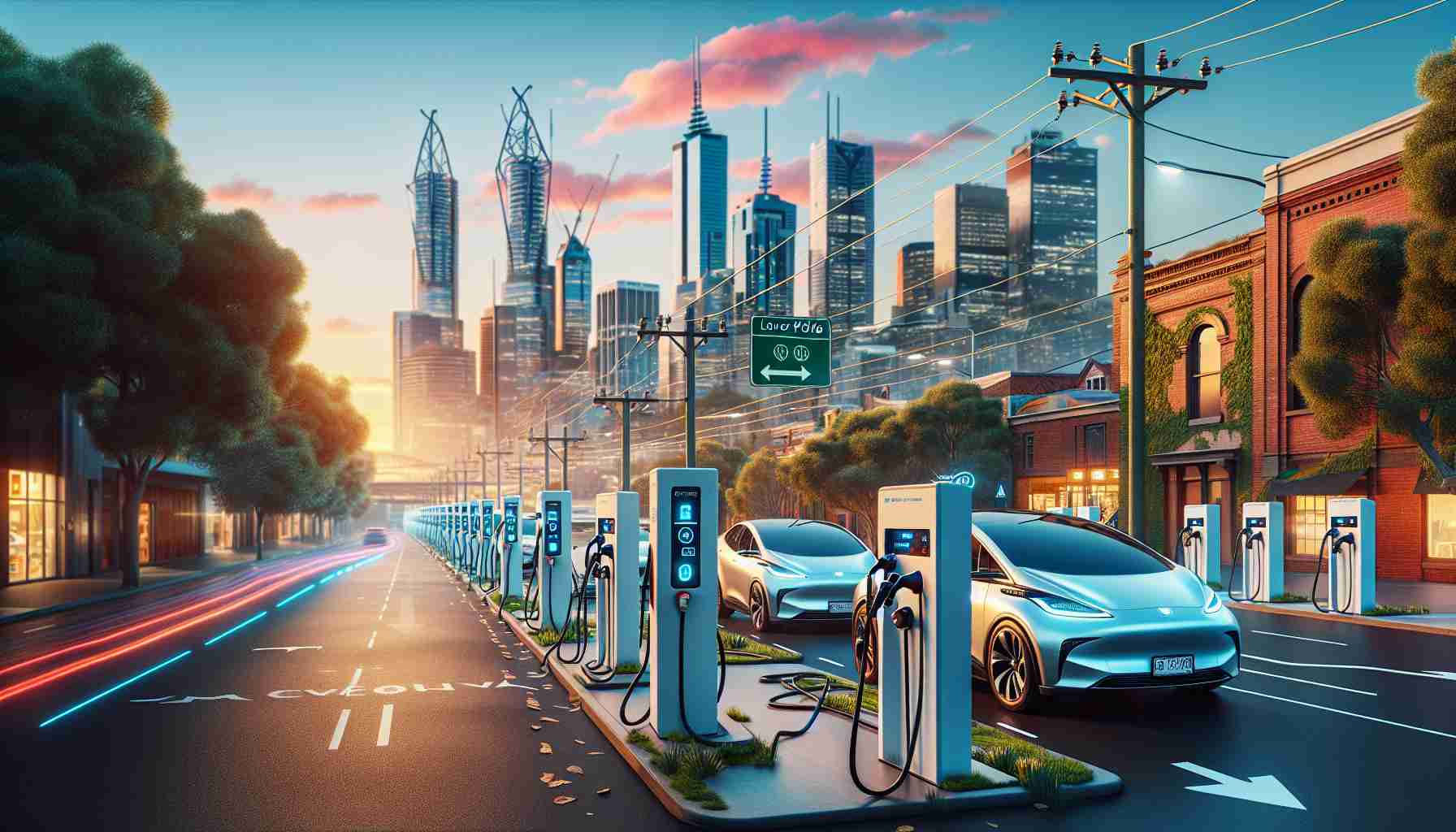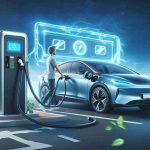The Future of Electric Vehicle Charging Infrastructure
Calls for a significant transformation of Australia’s electric vehicle (EV) charging framework are intensifying. Industry experts assert that this change could lower costs for motorists while encouraging more people to embrace EVs. A recently released report by Energy Networks Australia suggests that allowing distribution networks to build and manage EV chargers on existing power poles could address the pressing issues of limited charging facilities.
The leading distribution network, Ausgrid, has already endorsed this proposal. Ausgrid’s head of EV charging infrastructure highlighted that modifying regulations to permit the installation of chargers on power poles could ensure equitable access for all Australians wishing to charge their vehicles, regardless of their location.
Currently, some EV users face challenges due to the inadequate number of charging stations, often resorting to suboptimal methods to power their cars. The vision involves retrofitting power poles with necessary upgrades—such as installer units and safety mechanisms—while ensuring that the electrical load does not compromise grid stability.
Furthermore, this plan aims to foster competition among EV charging providers, driving down costs significantly. By capitalizing on existing infrastructure, the proposal hopes to provide readily available, affordable charging solutions, particularly benefiting the approximately 30% of users without off-street parking.
To facilitate this ambitious project, current regulations must evolve. Aligning these guidelines with the growing demand for accessible EV infrastructure will be crucial for Australia’s transition toward sustainable vehicle options.
Transforming Australia’s EV Charging Infrastructure: A Step Towards a Sustainable Future
The push for an enhanced electric vehicle (EV) charging framework in Australia represents not just a technological upgrade, but a critical move towards a more sustainable future. As outlined in a recent report by Energy Networks Australia, allowing distribution networks to build and manage EV chargers on existing power poles could revolutionize access to charging stations across the country. This development not only has significant implications for the environment but also deeply affects humanity, the economy, and the global landscape.
Environmental Impact
The expansion of EV charging infrastructure is crucial for accelerating the transition from fossil fuels to cleaner, renewable energy sources. By addressing the current limitations in charging facilities, particularly for urban residents without off-street parking, more Australians can make the switch to electric vehicles. This shift is essential for reducing greenhouse gas emissions, which are a major contributor to climate change. The interconnectivity between greater access to charging stations and an increase in EV adoption illustrates how innovative infrastructure can lead to a reduction in carbon footprints and promote environmental sustainability.
Humanitarian Benefits
Access to reliable charging infrastructure is a matter of social equity. The current disparity in charging options disproportionately affects low-income communities and those living in high-density urban areas. By implementing a system that allows for widespread access—regardless of location—Australia can foster inclusivity in the transition to EVs. This approach not only enhances mobility for all citizens but also contributes to improved public health by lowering pollution levels in densely populated areas.
Economic Considerations
The proposal for retrofitting power poles with EV chargers could stimulate economic growth through job creation in the installation, maintenance, and operation of these facilities. Moreover, it fosters competition among charging providers, subsequently driving down consumer costs. A flourishing EV market could lead to innovations in related sectors, such as battery production and renewable energy, promoting a robust green economy. Policymakers must recognize that investing in EV infrastructure can yield long-term economic benefits, making it a wise strategic move.
Global Connections and Future Implications
Australia’s pursuit of a comprehensive EV charging network not only impacts its citizens but also positions the country as a responsible player in the global effort against climate change. By demonstrating effective EV integration into their transportation model, Australia could inspire other nations, especially those facing similar infrastructural challenges. The ripple effects of these advancements have the potential to lead to international cooperation and knowledge sharing about sustainable transportation practices.
As humanity stands at a crossroads with pressing environmental challenges, the future of electric vehicles hinges on creating an accessible and efficient charging infrastructure. The path forward necessitates not just technological solutions but a collective commitment from governments, industries, and citizens to embrace change for the sake of a sustainable planet. By fostering an inclusive transition to electric mobility, Australia can pave the way for a greener global community, ensuring a livable future for generations to come.
Revolutionizing Electric Vehicle Charging: Australia’s Vision for the Future
The Future of Electric Vehicle Charging Infrastructure
As the electric vehicle (EV) market continues to expand globally, Australia is at a pivotal moment where its charging infrastructure must undergo significant transformation. With rising demands and innovations, industry experts believe that streamlining the EV charging framework could reduce costs for consumers while accelerating the adoption of electric vehicles.
Current Landscape of EV Charging in Australia
Electric vehicle users in Australia have encountered various challenges regarding the limited availability of charging stations. Industry reports highlight that many EV owners face significant barriers, particularly in urban areas where off-street parking is scarce. According to recent studies, around 30% of EV users lack access to dedicated charging facilities at home, making public charging options critical to their vehicle’s viability.
Proposed Solutions and Innovations
A groundbreaking report from Energy Networks Australia emphasizes the potential benefits of allowing distribution networks to install EV chargers on existing power poles. This innovative approach aims to address the scarcity of charging facilities while optimizing the use of current infrastructure. The proposal has garnered support from leading distribution networks, such as Ausgrid, which sees this as a way to ensure equitable and widespread access to charging for all Australians.
The plan involves retrofitting power poles with essential infrastructure, including installer units and safety mechanisms, without compromising the stability of the electricity grid. By creating additional charging points, this initiative could foster competition among EV charging providers, ultimately driving down costs for consumers.
Advantages and Limitations
# Pros:
– Increased Accessibility: By utilizing existing power poles, more EV chargers can be deployed in urban and suburban areas, addressing the lack of charging stations.
– Cost-Effective: The use of existing infrastructure reduces the high costs typically associated with constructing new charging stations.
– Encourages Competition: More players in the EV charging market can lead to better pricing and services for consumers.
# Cons:
– Regulatory Challenges: Current regulations may need significant updates to allow such installations, which could slow down the implementation process.
– Infrastructure Limitations: Retrofitting existing poles might present technical challenges related to load capacity and safety.
Trends in EV Charging Infrastructure
With the global trend towards electrification, countries are investing heavily in EV infrastructure. Australia is no exception, with databases showing rapid growth in public and private charging solutions. The Australian government has set ambitious targets to achieve net-zero emissions by 2050, highlighting the importance of developing a robust EV ecosystem.
How to Advocate for Better EV Charging Options in Australia
1. Stay Informed: Follow updates from agencies like Energy Networks Australia and government initiatives regarding EV infrastructure developments.
2. Engage with Local Leaders: Advocate for policy changes that support the installation of EV chargers on power infrastructure in your community.
3. Support EV Initiatives: Participate in EV events or forums to lend your voice toward making sustainable vehicle options available to all.
Predictions for EV Charging in Australia
Looking ahead, experts predict that the evolution of EV charging infrastructure is not just a necessity but an imperative. Australia may witness a rapid growth in charging stations as local governments and private companies collaborate to enhance the current framework. By 2030, it is anticipated that there will be substantial improvements in charging accessibility and technology, potentially aligning with global advancements in renewable energy and sustainability.
As the discussion around EV charging infrastructure continues to gain momentum, Australia stands on the brink of a transformation that could lead to a cleaner, more sustainable future for all its motorists. For further information on the latest policies and developments in the EV space, visit Energy.gov.au.











